-
 2025-12-22 22:03
2025-12-22 22:03
By Sheida Sabzehvari
Blood drips from their pens
US media should be held accountable for its role in the 12-day war against Iran
TEHRAN – Americans frequently label media outlets from other countries as “state-controlled” or “state-affiliated.” They tell their readers and viewers that foreign media is disingenuous, while American outlets are portrayed as independent, unbiased, and professional.
-

By Dr. Jin Liangxiang
The limits of pragmatism: Persistent fragility in US-PGCC ties
SHANGHAI - The year of 2025 saw a new rapprochement between the U.S. and PGCC countries. U.S. President Donald Trump visited Saudi Arabia, UAE and Qatar in May while Qatari Emir and Saudi Crown Prince visited the U.S. in the second half of the year. The reasons behind the latest warming-up could be numerous, but the most important should be that the two sides have simultaneously taken pragmatic approaches in their policies toward the other. And pragmatism will underline the relations between the two in the future.
-

By Sondoss Al Asaad
Lebanon’s phantom prince: A political scandal beyond ordinary fraud
How a fraudulent Saudi envoy swindled Lebanon’s elite
BEIRUT—Lebanon is no stranger to political scandal, but few incidents rival the intrigue of the case now known locally as the “Phantom Saudi Prince” affair.
-

By staff writer
A ceasefire that bleeds: Gaza war repackaged as peace
TEHRAN – The October 10 ceasefire in Gaza was sold to the world to signal that Israel’s war on the Palestinian enclave had finally stopped. In reality, it may be one of the most effective political tools yet devised to keep the machinery of destruction running while convincing the international community that peace has arrived.
-

By Wesam Bahrani
The Israeli campaign against UNRWA
TEHRAN – The Israeli regime’s hostility against UNRWA is a politically driven effort to dismantle the Palestinian cause by erasing the refugee issue from the international agenda.
-
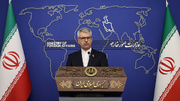
‘Our defensive capabilities not open for talks’: Iran’s foreign ministry
TEHRAN – Iran’s Foreign Ministry spokesman Esmaeil Baqaei used his weekly press briefing on Monday to reiterate Tehran’s positions on regional conflicts, international diplomacy, and national defense, strongly criticizing Israel and the United States while rejecting Western accusations against Iran.
Politics
-

US faces flak at home for testing copy of Iranian drone
TEHRAN – The U.S. Navy has, for the first time, launched a long-range attack drone from a warship in the Persian Gulf. While the U.S. military hailed this as a step toward optimizing its destabilizing missions in West Asia, American media have viewed it as a sign of Washington falling behind in critical technologies.
-
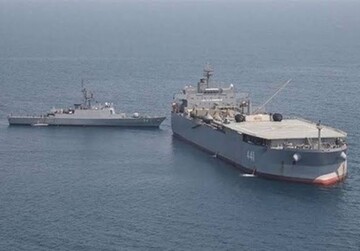
Two armadas set sail for South Africa as Iran continues quest for deeper multilateral military ties
TEHRAN – Iran continues to deepen military cooperation with international and regional blocs, dispatching two armadas to South Africa for BRICS military exercises.
-

Pompeo’s wishful thinking: engineered collapse in Iran
TEHRAN – Mike Pompeo’s recent Fox News op-ed, titled “The Islamic Republic is on the ropes. Time for Trump, Iranians to finish the job,” deserves a careful response — not because it offers some type of analysis, but because it reveals a worldview that treats a sovereign nation as a political project to be engineered from abroad.
Sports
-

Tractor book spot in AFC Champions League Elite Round of 16
TEHRAN - Tractor football club booked their spot in the Round of 16 of the AFC Champions League Elite 2025/26 after fighting back to defeat Al Duhail SC 2-1 on Monday.
-
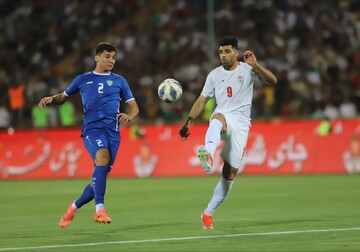
Iran end 2025 unchanged in FIFA ranking
TEHRAN – Iran national football team ended 2025 year unchanged in the FIFA World Ranking released on Monday.
-
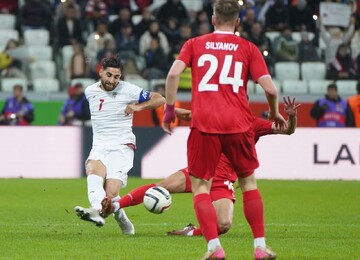
Iran to play three friendlies ahead of 2026 World Cup
TEHRAN – As the Iranian national football team enter the final phase of its preparations for the 2026 FIFA World Cup, the Football Federation of Iran is planning to arrange three international friendly matches for Team Melli.
Culture
-
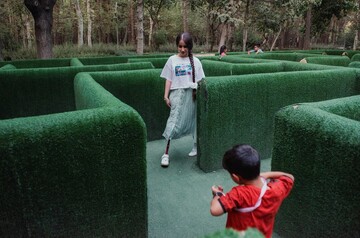
Iranian photographers honored in UNICEF’s 2025 Photo of the Year
TEHRAN- Two Iranian photographers received special recognition for their impactful work at the UNICEF Photo of the Year 2025, announced earlier this week.
-

“Oscar Music Winners” film concert to be staged in Tehran
TEHRAN – The “Oscar Music Winners” Film Concert will be held at the Espinas Palace Hall in Tehran on December 29.
-

Iran, Tajikistan strengthen cultural ties
TEHRAN- Iranian Deputy Culture Minister for Cultural Affairs Mohsen Javadi met with Tajik Deputy Culture Minister Davlat Safarzadeh in Tehran on Saturday, emphasizing the strong ties between Iran and Tajikistan.
Economy
-

Tajikistan seeks broader civil aviation cooperation with Iran
TEHRAN – Tajikistan has called for expanding cooperation with Iran in civil aviation, praising the technical expertise and professional approach of Iranian aviation officials following a joint safety oversight mission, state media reported.
-

Iran exports non-oil goods worth $6.7b to Iraq in 8 months
TEHRAN- Iran exported non-oil commodities valued at $6.719 billion to Iraq during the first eight months of the current Iranian calendar year (March 21-November 21), the Islamic Republic of Iran Customs Administration (IRICA) announced.
-

Iran, China explore ways to deepen strategic economic cooperation
TEHRAN – Iran’s private sector and Chinese policy institutes held talks on expanding long-term economic and strategic cooperation, focusing on investment, finance and regional connectivity, officials said.
Society
-

Iran submits commitment document at global summit on traditional medicine
TEHRAN – During the closing ceremony of the second World Health Organization (WHO) Global Summit on Traditional Medicine, Iran pledged commitments to advance the implementation of the Global Strategy for Traditional Medicine 2025-2034.
-

Intl. Conference on Information, Knowledge Technology to be held
TEHRAN – The 16th International Conference on Information, Knowledge Technology (IKT 2025) will kick off on Monday and will run till December 25, with scientists from six countries, namely the U.S., Spain, Canada, the Netherlands, Malaysia, and New Zealand in attendance.
-
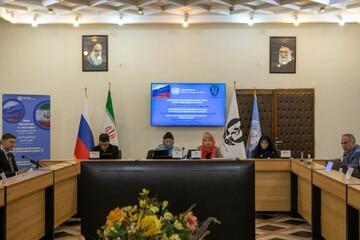
Tehran, Moscow holding workshops on drug abuse prevention, rehabilitation
TEHRAN – The Drug Control Headquarters (DCHQ) of the country, in cooperation with the Russian Federation, is conducting workshops that provide effective strategies for the early detection and prevention of drug abuse in Tehran and eight other provinces of the country.
Tourism
-
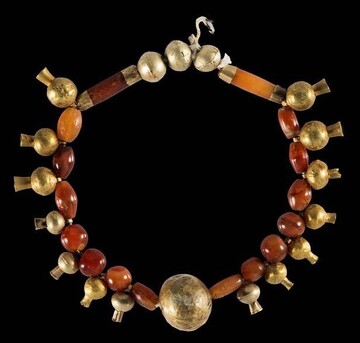
Archaeologist says pomegranate origin traces back to the Iranian plateau
TEHRAN--Pomegranate is not only a plant native to the Iranian plateau, but also a symbol of civilization that has been present in Iranian culture as a symbol of fertility, blessing, and continuity of life, at least since the Iron Age until today, and rituals such as Yalda Night are a direct continuation of this ancient tradition.
-
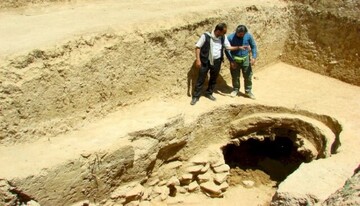
Nahavand’s tumulus-shaped tomb could shed light on Seleucid era: archaeologist
TEHRAN – An Iranian archaeologist has said the discovery of a tumulus-shaped ancient tomb near the city of Nahavand could reveal new details about the Seleucid period, citing it as the only known tumulus in Iran dated to that era.
-
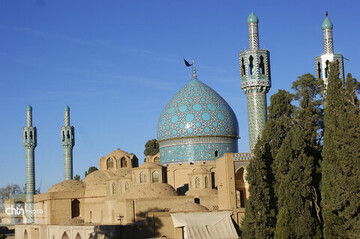
Dome of Shah Nematollah Vali Shrine restored
TEHRAN – A restoration and conservation work has been completed for on the dome of the Shah Nematollah Vali shrine in the city of Mahan in Kerman province, the provincial tourism chief said on Monday.
International
-

The limits of pragmatism: Persistent fragility in US-PGCC ties
SHANGHAI - The year of 2025 saw a new rapprochement between the U.S. and PGCC countries. U.S. President Donald Trump visited Saudi Arabia, UAE and Qatar in May while Qatari Emir and Saudi Crown Prince visited the U.S. in the second half of the year. The reasons behind the latest warming-up could be numerous, but the most important should be that the two sides have simultaneously taken pragmatic approaches in their policies toward the other. And pragmatism will underline the relations between the two in the future.
-

Lebanon’s phantom prince: A political scandal beyond ordinary fraud
BEIRUT—Lebanon is no stranger to political scandal, but few incidents rival the intrigue of the case now known locally as the “Phantom Saudi Prince” affair.
-

A ceasefire that bleeds: Gaza war repackaged as peace
TEHRAN – The October 10 ceasefire in Gaza was sold to the world to signal that Israel’s war on the Palestinian enclave had finally stopped. In reality, it may be one of the most effective political tools yet devised to keep the machinery of destruction running while convincing the international community that peace has arrived.
Video Comment
-

Ayatollah Khamenei’s vision of freedom and humanity discussed in intl. conference
-

Iran hosts SCO joint anti-terror drills
-

Holy Mary Metro Station marks interfaith unity in Tehran
-

Academics analyze social dimensions of Resistance in Tehran conference
-

Culture minister highlights year of progress in arts, global image enhancement
Most Viewed
-
Iran hit PKK, PJAK hard during war with Israel: Turkish DM
-
The rabid dog barks again
-
‘Project Sunrise’: Trump’s vision for Gaza
-
Israel’s role in fragmenting Yemen: Geopolitics, proxies, and strategic waterways
-
Fractured fortress: Israel crumbling from within
-
Iran, China explore ways to deepen strategic economic cooperation
-
Pakistan president voices solidarity with Iran from the air
-
Iran’s Eurasian turn
-
Araghchi says he will talk to Americans again once they are ready for a ‘fair deal’
-
Yalda Night, a symbol of human connection with nature, production and cultural identity
-
Iran exports non-oil goods worth $6.7b to Iraq in 8 months
-
The Unites States of extreme folly is a fact?
-
Russian experts Tehran and Moscow are building an informal strategic bloc
-
Araghchi highlights resilience of Venezuela in face of U.S. interventions
-
Zardari in Baghdad: Pakistan’s strategic axis







